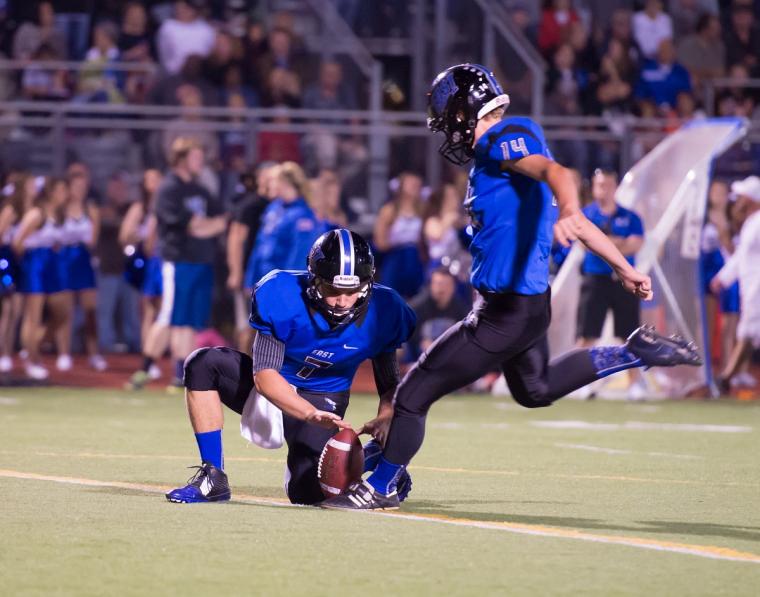
What do you do when your high school’s sports facilities are the punch line of jokes statewide? If you’re the vice president of the Board of Education, and you’re talking about Bowling Green High School in Ohio, you petition officials to reallocate 100 percent of the funds that athletes pay in order to participate in sports, so that they can be used to improve facilities and pay for current uniforms. Currently, the money goes into a general fund that seldom benefits athletics.
That information, first carried in Bowling Green Independent News, noted the district’s athletic advisory board voted 4-1 to carry the suggestion of Ryan Green, the Board of Ed’s V.P.
Ryan, the article noted, was sick of hearing the snide “That’s just Bowling Green” comments from visiting teams about poorly performing BGHS athletic facilities. And truth to tell, he hated seeing athletes unable to practice on tennis courts stayed wet, even on dry days, teams having to compete on substandard baseball and softball facilities, all while wearing varsity uniforms that were new a decade ago.
“That’s not acceptable to me. It makes me sick to see these things,” Myers said. “We’re light years behind just to catch up with other teams.”
Parents currently pay approximately $75 for a child to participate in sports. Athletic Director Michele Wolf says those pay to play fees brought in about $50,000 last year – money that could be used to create better facilities and better programs. The board’s vote now puts Wolf in charge of that $50,000 amount to use as she sees fit to enrich the student athlete experience.
“I believe we have one of, if not the best athletic director in the area,” Myers told reporters. “Let Michele do what we hired her to do.”
But Bowling Green High School’s problems go beyond the sports facilities. In March, the Sentinel-Tribune noted a host of issues at the school, including low water pressure in the bathrooms, not enough electrical sockets to power computers, tablets and other equipment – and a lack of ADA access.
And that’s just the beginning.
With an estimated one-third of students participating in music and more than half participating in sports, substandard (and in some cases, unusable) facilities, the school has reached a critical point in its dilapidation. In late April, the school board’s Facilities Advisory Committee recommended that a new school be built.
But while officials square off on budgets, one fact remains: The school’s athletic facilities are suffering. And athletic facilities are something that have the potential to bring in extra income as sports tourism venues. Unfortunately, it is difficult (if not impossible) to market facilities that are in dire need of repair. As a result, the school’s lack of income means there is even less to go around. It is a scenario that is playing out nationwide, and not just in schools but in the cities that surround them.
In Fort Worth, Texas, The Fort Worth Report noted the city has the ability to host only large soccer tournament – and is forced to turn away teams each year. More fields, an after-school program or a multi-million-dollar soccer stadium are all ideas being kicked around. Officials, the article points out, are tired of losing out on tourism dollars and seeing youth sports participation lag behind other parts of the metroplex.
In Staten Island, baseball league players and supporters have been pressing for improvement of the local parks department fields. Chris Soriano, who runs the Adult Baseball League on Staten Island, decries the fields as being safety hazards in a recording on his personal YouTube account. Soriano has visited and reviewed multiple fields and believes most of them are dangerous to players.
“I said what I felt and what I feel every Staten Island baseball person would say. I’ve had teams tell me they’d rather forfeit than play on those fields and I agree with them,” said Soriano. “I’m hoping the politicians can see themselves how bad these fields are and that something has to be done. Some money has to be put towards these fields.”
 “I know this isn’t cheap and maintenance is tough, but we deserve better,” he added. “It’s not a knock on anyone, we should come together with this. This is a plea for help, we need help. We need our fields fixed and we need someone to do something about this.”
“I know this isn’t cheap and maintenance is tough, but we deserve better,” he added. “It’s not a knock on anyone, we should come together with this. This is a plea for help, we need help. We need our fields fixed and we need someone to do something about this.”
Many sports governing bodies have grant, loan or support programs for facility assistance; however, not all do. Some programs are handled nationally while others are run through local and state associations. Still others are available through private organizations or through governments.
Some areas are trying creative approaches. Block Club Chicago noted that Amundsen High School’s baseball team uses the fields at Winnemac Park. The season may have started in March, but at least one of the fields could not be used because of heavy rain. Coach Craig Newman noted that the team spent “more time raking mud and trying to figure out how we can get a field playable than actually playing.”
A Lincoln Square alderman wants to use tax-increment financing district funds to improve the field and potentially cover the cost of a proposed dog park, as well.

